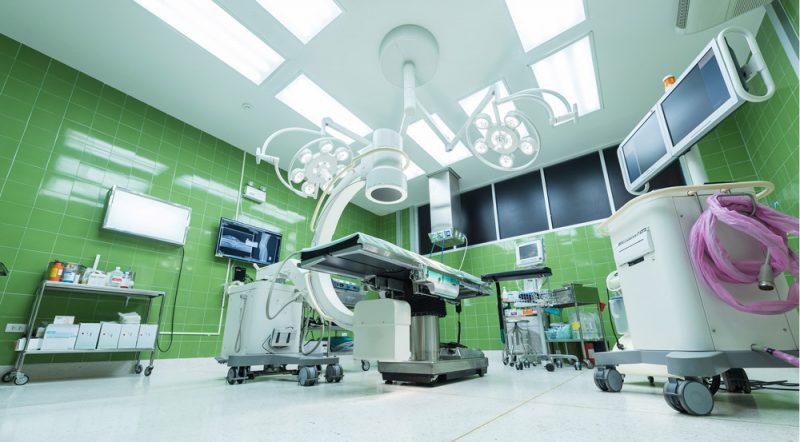Although healthcare workers are those most often affected by needlestick injuries, other occupations can be affected – eg, refuse collectors, cleaners and tattoo artists. Needlestick injuries may also affect carers and children picking up used needles.
The major blood-borne pathogens of concern associated with needlestick injury are hepatitis B virus (HBV), hepatitis C virus (HCV) and HIV. However, other infectious agents also have the potential for transmission through needlestick injury, including:[1]
- Human T-lymphotropic retroviruses I (HTLV-I) and II (HTLV-II).
- Hepatitis D virus (HDV – or delta agent) which is activated in the presence of HBV.
- GB virus C (GBV-C) – formerly known as hepatitis G virus (HGV).
- Cytomegalovirus (CMV).
- Epstein-Barr virus (EBV).
- Parvovirus B19.
- Transfusion-transmitted virus (TTV).
- West Nile virus (WNV).
- Malarial parasites.
- Prion agents such as those associated with transmissible spongiform encephalopathies (TSEs).
Epidemiology
The average estimated seroconversion risks from published studies and reports are:[1]
- 0.3% for percutaneous exposure to HIV-infected blood.
- 0.1% for mucocutaneous exposure to HIV-infected blood.
- 0.5-1.8% for percutaneous exposure to HCV-infected blood with detectable RNA.
- 30% for percutaneous exposure of a non-immune individual to an HBeAg positive source.
A Health Protection Agency (HPA) report regarding healthcare workers, released in 2012, stated that:[2]
- Between 2002 and 2011, 4,381 significant occupational exposures were reported (increasing from 276 in 2002 to 541 in 2011).
- Between 2008 and 2011, there were five HCV hospital-acquired transmissions from patients to healthcare workers following percutaneous exposure injuries; three reported from England and two in Scotland.
- Even though percutaneous injuries remain the most commonly reported occupational exposures in the healthcare setting, they have decreased over time as a percentage of all exposures (from 79% in 2002 to 67% in 2011), whilst mucocutaneous exposures have shown an increase (from 21% in 2002 to 29% in 2011).
- The percentage of healthcare workers reporting percutaneous exposures that involved an HCV-infected source patient declined from 38% in 2002 to 32% in 2011.
- Between 2002 and 2011 most occupational exposures occurred in the nursing profession. In 2011, medical and dental professions reported a similar number of occupational exposures as nursing professionals. Exposures in the medical and dental professions increased by 131% (from 100 to 231) between 2002 and 2011.
- 72 significant occupational exposures reported between 2002 and 2011 involved ancillary staff. The majority of these exposures were due to non-compliance with standard infection control precautions for the handling and safe disposal of clinical waste.
- The total number of HCV seroconversions in healthcare workers reported between 1997 and 2011 is 20; 17 cases reported in England and 3 in Scotland.
- The last case of an HIV seroconversion in an occupationally exposed healthcare worker was reported in 1999.
Certain features of a percutaneous injury carry a particularly high risk:[3]
- A deep injury.
- Terminal HIV-related illness in the source patient.
- Visible blood on the device which caused the injury.
- Injury with a needle which had been placed in a source patient’s artery or vein.
In one study of 98 UK surgeons in a large district general hospital, 44% anonymously admitted to having a needlestick injury. The study concluded that the incidence of such injuries was likely to be under-reported, particularly in the surgical sector.[4]
Management
Follow local or national or international protocol.[5, 6] The study of surgeons in a district general hospital found that only 3% followed agreed local policy, and promotion of the importance of safety procedures needed to be emphasised.[4]
Report the incident and discuss with a local public health consultant immediately
Discuss type of injury, donor HIV status if known, etc. In the case of definite exposures to blood or other high-risk body fluids known or considered to be at high risk of HIV infection, post-exposure prophylaxis (PEP) should be offered as soon as possible, preferably within one hour of the incident. It may still be worth considering up to 72 hours after the exposure, but the relative benefit of prophylaxis diminishes with time. The current standard recommended regimen for PEP is a 28-day course of:[1]
- Truvada® (tenofovir disoproxil 245 mg/emtricitabine 200 mg) one tablet twice a day, plus
- Kaletra® (lopinavir 200 mg/ritonavir 50 mg) two tablets twice daily.
See also separate HIV Post-exposure Prophylaxis article. Antiretroviral drugs are not licensed for PEP, so must be prescribed on a ‘named patient’ basis by a doctor.
For hepatitis B vaccine and immunoglobulin see the separate Hepatitis B Vaccination and Prevention article.
The exposed person should also be advised:
- If they choose to have sex, to practise safe sex and to ensure that they follow such advice for a period of three months.
- Not to donate blood until all necessary screening tests are clear.
- To see their GP if they develop a fever.




